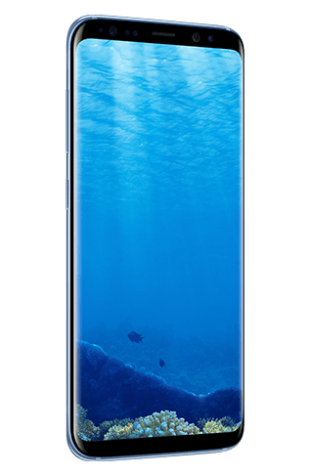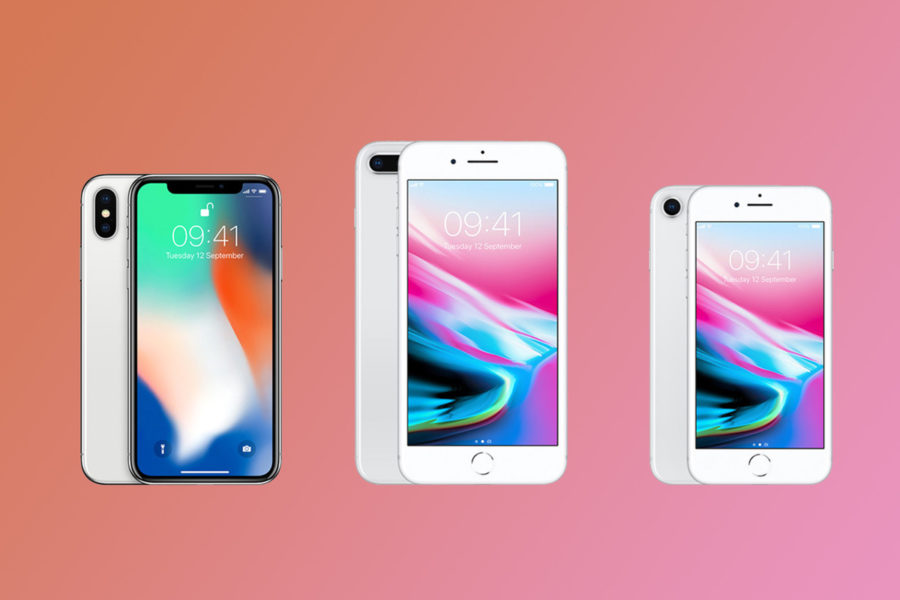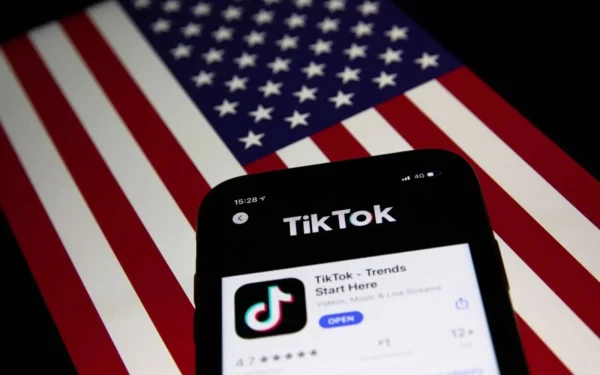How do the New Suite of iPhones Measure Up?
Photo courtesy of http://www.pocket-lint.com
Left to right: the Apple iPhone X, 8 Plus, and 8 may be popular gifts this holiday season.
iPhones are by far the most popular cell phone company in America, with over 41% of cell phone users in America having one according to comscore.com, one of America’s leading media measurement and analytics companies. On September 22, the iPhone 8 and 8 Plus were released. Usually the release of a new iPhone is a huge deal causing lots of excitement and chaos with Apple users, but the iPhone 8 did not cause as much fanfare as usual. So what gives?
First off, people may not be getting the iPhone 8 because the iPhone 7 came out just over a year ago, so people may not be ready to upgrade just yet. Also, the iPhone 8 is very similar to the 7, and Apple users seem to be saving their upgrade for a phone with a few more meaningful bells and whistles, such as the iPhone X, which is set for release on November 3. “Before I had the iPhone 7, but the iPhone 8 is the exact same thing, except the back is glass,” said eighth grader Liv Simon. “I don’t get why they even made it, but I’m getting the iPhone X when it comes out, and my dad is keeping the 8.”
Besides the iPhone 8 having a glass back as opposed to the usual aluminum in previous versions, the main differences between the iPhone 7 and 8 are the processors and different charging options. In terms of processors, Apple switched from its A10 Fusion chip to the A11 Bionic Chip in the iPhone 8. According to apple.com, The performance is supposed to be 25% faster than the old chip and 70% more efficient.
The battery did not change on the new phone, but the iPhone 8, 8 Plus, and X now have fast and wireless charging. “Essentially, wireless charging uses a loop of coiled wires around a bar magnet – which is known as an inductor,” said Ron Resnick, president of the Power Matters Alliance, a global, non-profit organization whose focus is to advance a set of standards and protocols for wireless charging and power transfer. “When an electric current passes through the coiled wire,” said Resnick, “it creates an electromagnetic field around the magnet, which can then be used to transfer a voltage, or charge, to something nearby.”
Even the prices of both iPhone 7 and 8 are very similar. The 7 originally retailed for $649 while the 8 is only $50 more at $699 (the 7 Plus was $769 compared to the 8 Plus price of $799). The iPhone X starts at $999 just for the 64 gigabyte model. The 256 gigabyte model is a whopping $1,149. Despite the hefty price tag, perhaps people are waiting for the X, which is why sales of the 8 and 8 Plus have been sluggish. In an article published by www.fortune.com on September 25, 2017, “according to Localytics, which has been analyzing iPhone adoption rates each year, the iPhone 8 (.3% worldwide market share) and 8 Plus [.4% worldwide market share] is far behind the iPhone 7 after its first weekend, when last year’s Apple handset captured 1% share of the marketplace. The iPhone 6, which was released in 2015, nabbed 2% iOS market share during its first weekend.

Samsung’s Galaxy S8 has many of the same features as the iPhone X.
When it comes to the iPhone X, it is definitely an improved model when compared to the the iPhone 8 and 8 Plus. The X has the biggest HD display of the three phones (5.7”), has a higher pixel resolution (2436 x 1125 pixels), features facial recognition rather than Touch ID, possesses a battery that lasts 2 hours longer than any other iPhone and allows up to 21 hours of talk time, dual optical image stabilization, and portrait and animoji options for its front-facing camera.
However, many of its features are the same or better in Samsung’s Galaxy S8, which came out in April of this year and runs the Android operating system, Apple’s largest competitor. The S8 retails for just $720, has a 5.8” Quad HD and Super AMOLED display, a 2960 x 1440 pixel resolution, and allows 29 hours of talk time. Both the X and S8 also have 12 megapixel (MP) autofocus (AF) back-facing cameras, but the the S8 has an 8MP AF front-facing camera (for selfies) while the X only has a 7MP AF front-facing camera. One megapixel may not seem like a big difference, but it’s one million more pixels. If a camera has 8MP, it can produce a picture with 8 million pixels. In addition, The S8 is made with gorilla glass 5 and the iPhone X is made with “the most durable glass ever in a smartphone” according to Apple, but the company doesn’t mention what kind of glass it is.
Still, because of Apple’s brilliant marketing and market saturation in the U.S., many students want the iPhone X despite the fact that they could purchase the Galaxy S8 for less money. “I want to get the iPhone X because it seems really cool and it’s different from other iPhones,” said seventh grader Grace Tighe. “I really like the design and the new features on it.”
Yet, there are still some consumers who don’t feel the iPhone X’s big price tag is justified. “I would probably consider getting one of the [iPhone Xs], but the features aren’t as impressive as I would have thought they would be by now,” said eighth grader Caroline Yancey. “I think the price is crazy because you could buy so many things with that kind of money. I would definitely consider buying a Samsung if someone could persuade me into it,” she said.
Both phones have amazing features, and for some people, it is all about preference. “Right now I have an iPhone, but I’ve wanted to get a Samsung since right after I got my current phone,” said eighth grader Ignas Berciunas. “My contract is going to expire soon, so I’m gonna get the Galaxy S9 when it comes out,” he said. “I prefer Samsung because it allows for more customization and freedom with the design. The features are also better than Apple’s.”
Although Apple’s iPhone line have dominated the smartphone market in the United States, that doesn’t necessarily mean it produces the best product. iPhones are more simplistic, and there are not a lot of customization opportunities compared to Samsung, where users can virtually change everything about the appearance of their phone. Whether you’re with Apple, Samsung, or even LG or Motorola, every person is different, and so are their phone preferences.
iPhone has had the American market cornered for years, but will its three new phones do as well as the ones in the past? So far, the 8 and 8 Plus are not living up to expectations in terms of sales, but time will tell. The iPhone 8 and 8 Plus are very similar to the iPhone 7 line, and the high price of the X, which hasn’t even come out yet, might deter some consumers. Even with these factors, with the holidays approaching, it seems that many people will still buy and enjoy all three models released by Apple this year, even if Samsung’s S8 boasts similar features at a lower price.





